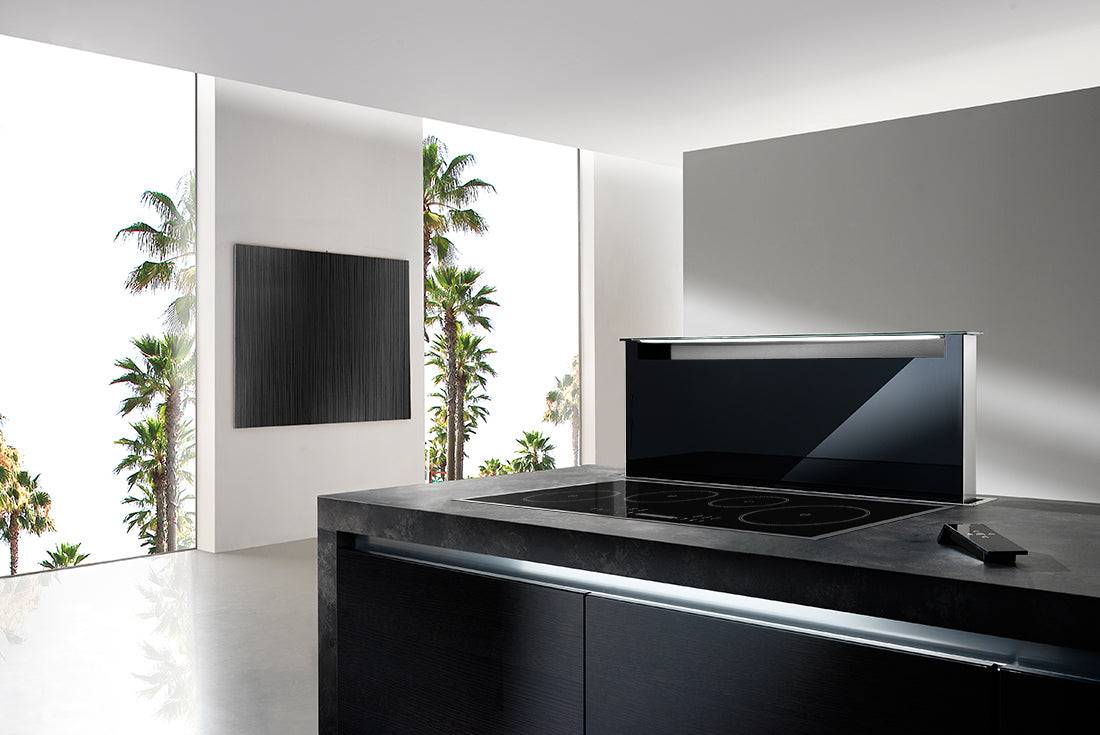Airone D-002-ELEKTRA downdraft - 81 cm - stainless steel-black glass - motorless
Heb je een vraag hierover?
Airone downdraft Elektra stainless steel - black glass 81cm version
motorless, can be combined with associated internal or external motors
fixed, internal motor 730 m³/h - 59 dBa (position 3)
remote control 3 settings + intensive + timer
grease filter(s) aluminium
lighting 81 cm 1 x 6.3 W LED strip - 4000 Kelvin
Optional with the Airone Elektra 81cm stainless steel - black glass downdraft
recirculation based on carbon filter
Additional information for the Airone Elektra 81cm downdraft stainless steel - black glass
cutting size: 790 x 100 mm (81 cm)
rebate size: 814 x 120 mm (81 cm) - rebate depth 2 mm - R2
cover panel dimensions: 775 x 82 mm (81 cm) - 1 - 20 mm thickness - R2
worktop material can be used as a cover plate on the extractor hood, which goes up with it
This extractor hood is only suitable for ceramic and induction hobs; no gas hobs .
the extractor hood only functions at full deflection of 300 mm
the associated internal motor can be placed at either the front or rear of the downdraft
recommended distance between hob cut-out and downdraft cut-out: 50 mm
worktop material used as a cover plate falls within a stainless steel frame that is visible in the worktop
Accessories for the Airone Elektra 8cm stainless steel - black glass downdraft
RF-005-FILTER recirculation filter (2 pieces required)
Alphenberg leather in collaboration with Wave
Leather exudes strength, but at the same time has a chic and timeless look, which also looks modern. It fits effortlessly into any interior. Due to its special qualities and properties, leather is suitable for applications on furniture, doors, fireplaces and unexpected design elements, such as in the kitchen. At Alphenberg, everything revolves around the passion for leather, and we are happy to share that passion with you.
Wave works with different materials for our design elements on a daily basis, including leather. In collaboration with Alphenberg, we have developed a unique extraction unit with leather upholstery. A beautiful example of craftsmanship that offers the perfect balance between design and technology, applicable to various models. Alphenberg is the specialist in leather and high-end interior applications, and we are happy to make use of their expertise.













Do you have questions about Wave products? The WKP team is here to help.
You are most welcome in one of our showrooms to discuss with an advisor which extractor hood fits best in your kitchen interior. If you make an appointment in advance, you can be sure that there is plenty of time for you.
Kantoor WKP
Meidoornlaan 52d
4902 SC Oosterhout
T 0162 – 47 26 26
Showroom DTC
Nijverheidscentrum 2
2761 JP Zevenhuizen
* Visits by appointment only
Of course, questions can also be answered by phone. The team can be reached on workdays at 0162-472626. Or visit the Wave support page







